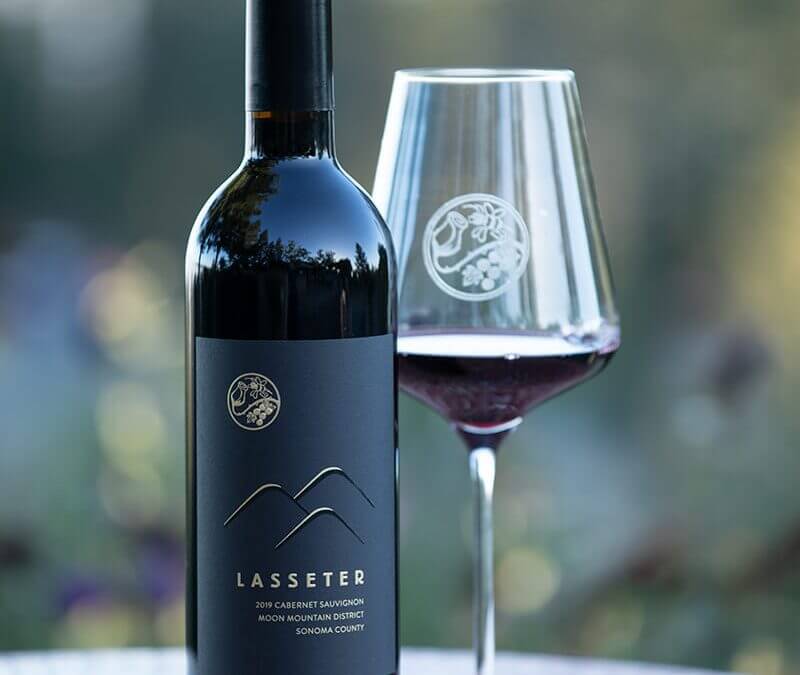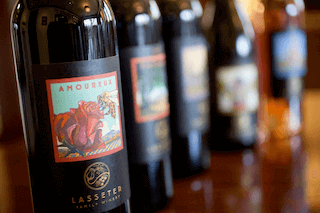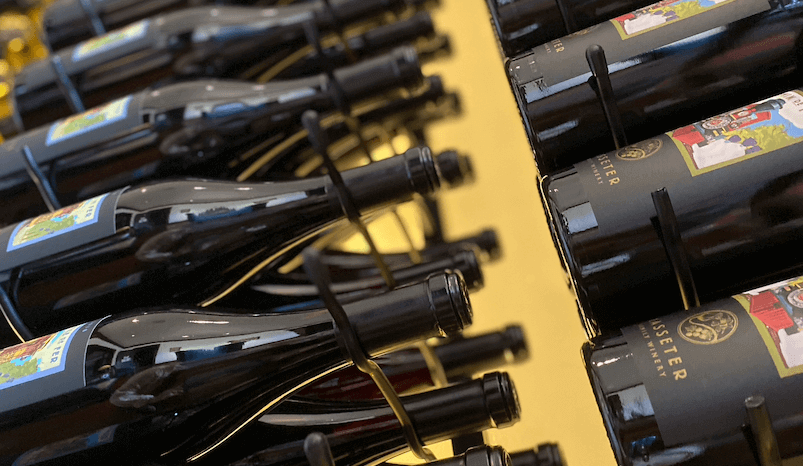People often ask how to tell whether a wine is meant to age or not, or how to tell whether the wine you are drinking is at its best or could benefit from more or less time in your cellar before opening.
The more experience you gain, the more questions you ask of friends, retailers, and restaurant sommeliers, the more you will begin to develop your own sense of which wines to age and which to drink younger.
You may also find that some wines that are recommended for aging, are more enjoyable to you without aging, or vice versa. The great thing is that it is the journey to find out is endlessly enjoyable!
While there are no “right” answers, it can be helpful to have a general idea as to which types of wine are intended for early drinking or holding until a later date.
What Affects the Longevity of Fine Wine?
The type of wine and its storage conditions are the two main factors that affect the longevity of an unopened bottle of wine.
Some wines are crafted for longer shelf life and improve with age while others are made for early enjoyment.
Understanding these factors will help you make informed decisions about your wine storage and consumption.
Factors Affecting Unopened Wine Shelf Life
Wine Type and Shelf Life
To be certain whether a wine was made to ‘age’ or not, requires knowing the specific producer and wine, since the region and wine type isn’t a guarantee either way.
That said, there are some easy, reliable ‘rules’ to help predict how best to enjoy various wines.
First you might ask, what is aging anyway? In general terms, it is the set of chemical reactions that influence the flavor and texture of the wine over time.
These include small amounts of oxygen entering the bottle through a wine cork, and other reactions among sugars, acids, and phenolic (aromatic) compounds.
Aged fine wines can be a unique and wonderful experience due to the subtleties that only time can develop, while too much oxygen in a wine meant to be enjoyed upon release can make the wine seem tired.
Generally, red wine can improve with age longer than white wines due to red grape skins having “tannins,” which act as a preservative and can slow the process of change in wine over time.
That said, there is white wine made for aging, and red wine meant to be enjoyed upon release.
A wine’s shelf life depends on several criteria, combined with a wine being stored properly. Here is a recommended drinking window for unopened wines:
Lighter wines such as white wine and rosé wine under $20 per bottle are best enjoyed upon release and will likely still be enjoyable 1 to 2 years after.
Red wine under $20 per bottle can be enjoyed upon release and for 2 to 3 years after.
Sparkling wine under $20 per bottle can be enjoyed upon release and for 2 to 3 years after.
Dessert wine under $20 per bottle can be enjoyed upon release and for 2 to 3 years after.
Fortified wine (wines like port wine, with additional alcohol added) can be enjoyed upon release and for 2 – 8 years after.
Why mention price? Unless you are buying wine from a specialty bottle shop or ‘alternative’ wine website, most wines found in your typical retail shop or market are made with the knowledge that 90% of people consume wines within 1 to 2 weeks from purchase date (according to a study from Sonoma State University’s Wine Business Department).
Other studies suggest that within 48 hours is more accurate. For common wines, the wine’s quality is more important than how long the wine lasts.
One of many benefits of buying wine from a more ‘curated’ retailer, is that they have experience with most of the wines in their shop, can tell you how long a particular bottle of wine will last, how long you can expect the leftover wine to last, whether they have aged wines that are ready to drink should you want to have that experience, etc.
One important note is that you can and should tell a retailer exactly how much you want to spend, so that there is no pressure to spend more than you want to.
Creating a Wine Cellar for Optimal Storage
Ideal Storage Conditions to maximize a wine’s “shelf life:”
Store wine in a cool, dark place, away from direct sunlight.
Maintain a consistent temperature between 50-60 degrees.
Keep the wine away from vibrations and store the bottle sideways to keep the cork moist.
Store unopened wine bottles in a cellar or cooler to control temperature and humidity.
Storing Unopened Wine
Bottle Orientation and Storage
Store unopened wine bottles on their side to keep the cork moist and prevent drying out.
Avoid storing wine at room temperature, as it can accelerate the aging process and potentially degrade the wine.
Store unopened wine in a wine cellar or wine cooler to control temperature and humidity.
Signs of Spoilage in Unopened Wine
Visual Inspection and Taste Test
First off, inspect an unopened wine bottle for signs of leakage or seepage around the cork or cap. This is the first way to tell if your wine might be compromised.
If any of these signs are present, then you may have a bad wine, but only further investigation, and perhaps tasting, will tell for sure.
One possible reason for seepage, are that the wine was overheated in transit or storage, often referred to as ‘cooked,’ which does give it a raisiny, cooked quality or other off-flavors.
Another possible cause could be a loose cork that allowed early ‘oxidation,’ which could brown the wine like an apple that sits out, and could make the wine taste putrid or overly sweet.
Next, check for visible signs of sediment or discoloration in the wine. Sediment can be a naturally occurring result of certain particulate matter ‘falling out’ of solution as the wine ages, and is not a problem.
In this case, we have a good example of one reason we often decant wine. We leave the last traces of wine in the bottle, along with the harmless sediment.
On the other hand, lots of sediment could be a sign of careless winemaking, but if it tastes good to you, you can use a sanitized strainer to decant the wine so you can enjoy it.
Next, look for a production or vintage date mentioned on the label or cork, which indicates the year in which the grapes were harvested.
How To Tell Sound Wine From Wine With ‘Faults:’
A good wine should have a pleasant, complex array of aromas, such as fruitiness, floral notes, botanicals, earthy aromas, and spices.
You can tell that a wine has gone bad if it has a sharp, vinegar-like smell, a musty, moldy smell, or a heavy raisin smell, indicating that the wine is spoiled or over-aged.
Sometime people ask if they can use this kind of opened wine bottle for cooking wine, but remember that even in cooking, ‘off’ flavors might come through.
You might be better served to buy a designated ‘cooking wine’ or use a ‘sound’ wine that you may have left open a few days longer than ideal. Or a very inexpensive wine from a discount food or wine retail shop.
Common Causes of Wine Spoilage
Oxidation and Acetic Acid Bacteria
Wine spoils due to a combination of chemical reactions, including oxidation, bacterial growth, and undesirable fermentation.
Excessive exposure to heat, light, or oxygen can cause these reactions, altering the wine’s flavor profile and leading to spoilage.
Acetic acid bacteria can consume the alcohol content in the wine, turning it into acetic acid and acetaldehyde, resulting in a vinegar-like smell.
Other Wine “Faults:”
Cork Taint: “TCA,” or Trichloroanisole, is a compound that can infect a cork and make the wine taste musty, metallic, or lacking in fruit.
Mercaptans: If wine smells like burnt rubber, it could be ‘reduced,’ which happens when wine isn’t given enough oxygen during winemaking.
Decanting an opened bottle that has this wine smell, for 30 minutes or so, may help, though there’s no guaranteed.
Brettanomyces is a spoilage yeast that can give the wine a ‘barnyard’ or ‘Bandaid’ aroma. Even though it sounds like this would indicate a bad wine, a small amount of this characteristic is not a negative for many people. It just depends on your taste and level of sensitivity.
Tips for Extending the Life of an Unopened Wine
Handling and Storage Tips
Handle unopened bottles with care to prevent damage to the cork or label.
Keep unopened wine in a cool, dark place, away from direct sunlight.
Maintain a consistent temperature between 50-60 degrees for your wine.
Keep the wine away from vibrations and store the bottle sideways to keep the cork moist.
Store unopened wine in a wine cellar or wine cooler to control temperature and humidity.
In conclusion…
Unopened wine can last for years, even decades, under optimal circumstances.
Many wines are intended to be consumed within a few years of production, while wines produced using some of the following grape varieties can be made to age:
Cabernet Sauvignon, Syrah, Nebbiolo, Pinot Noir, and in some cases Zinfandel
Certain fine white wine such as certain Chardonnays, Rieslings, Chenin Blancs, or various types of sparkling wine.
The more questions you ask, and the more experience you gain, the better you’ll be at choosing and aging wines for your maximum enjoyment. Enjoy the journey!



